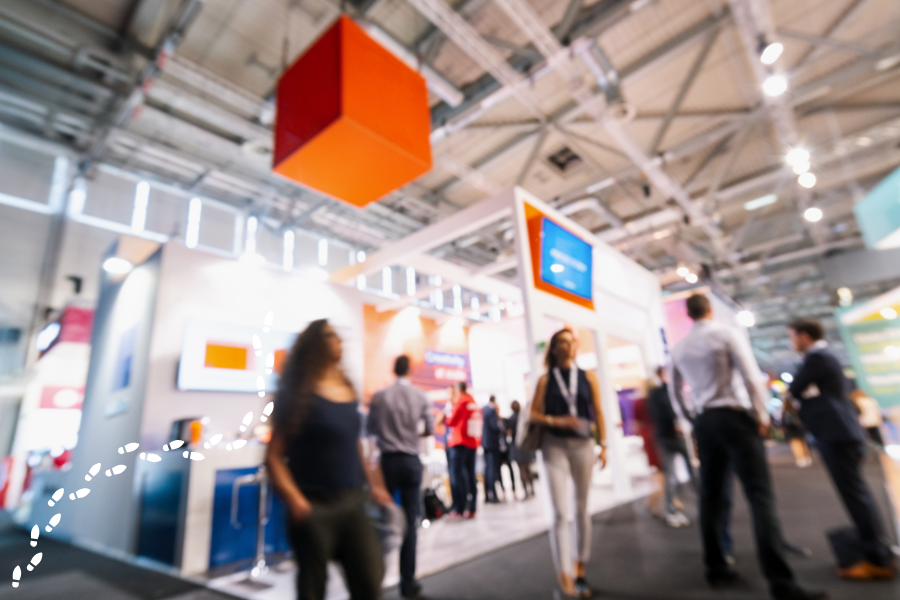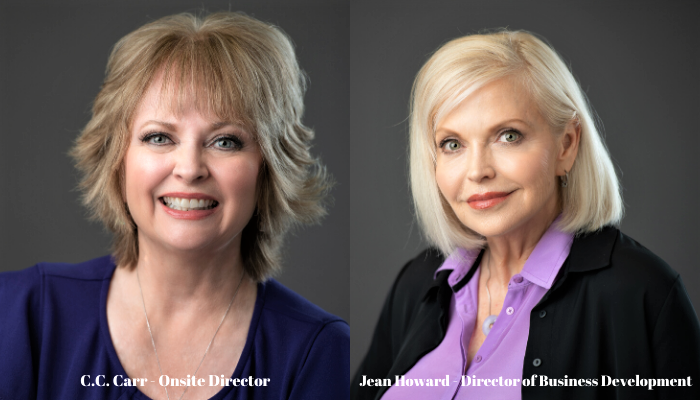First published November 1, 2019
Return on Investment. It’s the holy grail of measurement valued by company executives and relied upon to make business decisions. However, assessing the value of trade shows is a different and more difficult beast. The sales cycle is longer, and sales are harder to trace back to the trade show. Plus, there are more reasons to exhibit than just immediate sales. In fact, there are a myriad of reasons companies exhibit at trade shows:
- Expand your brand
- Meet face-to-face with customers and prospects
- Demonstrate or launch your products
- Research the competition
To name a few.
The science of determining the ROI of a trade show is mystifying to most of us. Wouldn’t it be great to offer booth traffic analytics as part of your ROI calculations? In addition to sales conversions, there are some unique technologies that can back up the oft-used claim to justify exhibiting, “Well the booth was packed.” Here are three:
1. Smart Mats
Smart mats can measure booth traffic in any area, and you can lease or buy the technology. Occupancy, traffic flow, dwell time and where visitors spent the most time can be measured. The mats are unnoticeable and can also help determine the hours your booth was the busiest.
2. Heat Mapping
Another way of providing booth traffic analytics is via heat mapping technology. Discreet sensors are installed in your exhibit. Using the online portal from the company providing the technology allows you to see data in real-time and analyze the information post-show. Were attendees just passing by? Or did they stay a while, and in which areas of your booth? This is an effective way to track visitor interest.
Real-life Example
Some high-end security cameras offer heat mapping capabilities as well. During the 2017 ISC West convention, security cameras designed to track “activity and dwell” times were featured in the Hitachi booth. Many of the cameras captured the activity around the Ford Commercial Vehicles booth (our long-time client) and other areas in the hall. The areas represented by the red color indicate lots of traffic and long visit times. One of the Hitachi staffers told us that the area around the Ford Transit Connect (depicted by the arrow in the photo) attracted the most people for the longest amount of time compared to any other area in the hall. This impressive information was presented to Ford in a post-show report proving in one measurable way the value of their trade show investment.
3. Mobile Marketing using Geofencing
Brands can also drive quality traffic to their booths with mobile marketing using geofencing. As featured in our blog 5 Tips for Making the Most of Mobile Marketing at Trade Shows:
Mobile ads sent based on geofencing, which place a virtual boundary around a real-world location, are a great way for exhibitors to get their message directly in the hands of attendees. Using the geofence, they can prompt mobile push notifications, trigger text messages or alerts and send targeted advertisements on social media to get attendees to their booth.
With mobile marketing you will glean the total number of impressions, clicks and CTR (Click Through Rate) of your campaign by optimizing the tools available that analyze user engagement. Crafting an incentive that drives traffic to your booth allows you to measure how many people came. According to Jean Howard, TPG Director of Business Development:
An effective way to measure what impact your mobile marketing campaign has on your booth traffic is to tie the campaign to a booth promotion. You could offer a specific branded gift or enter visitors into a daily drawing if they mention the mobile prompt (ad, text, alert) when they come to the booth. Be sure your staff knows to record those who do come into the booth in response to these mobile prompts!
If you decide upon a branded gift make sure it’s applicable to the industry, your brand and deemed attractive to the visitor as an incentive.
Conclusion
Knowing your Return on Investment is indeed the prize measurement valued by trade show marketers. But given the unique nature of trade shows and the long sales cycle, attracting trade show attendees to your booth, then measuring visitor volume, time spent and where, can be offered as part of your ROI calculation. It can also help you adjust your exhibit design, booth location preferences, products featured and the amount of staff you’ll need to provide the best visitor experience possible. Now when you tell your boss “Well, the booth was packed” as justification for your company’s sizable trade show investment, you can amaze and impress by proving it.
Related: 5 Tips for Making the Most of Mobile Marketing at Trade Shows


